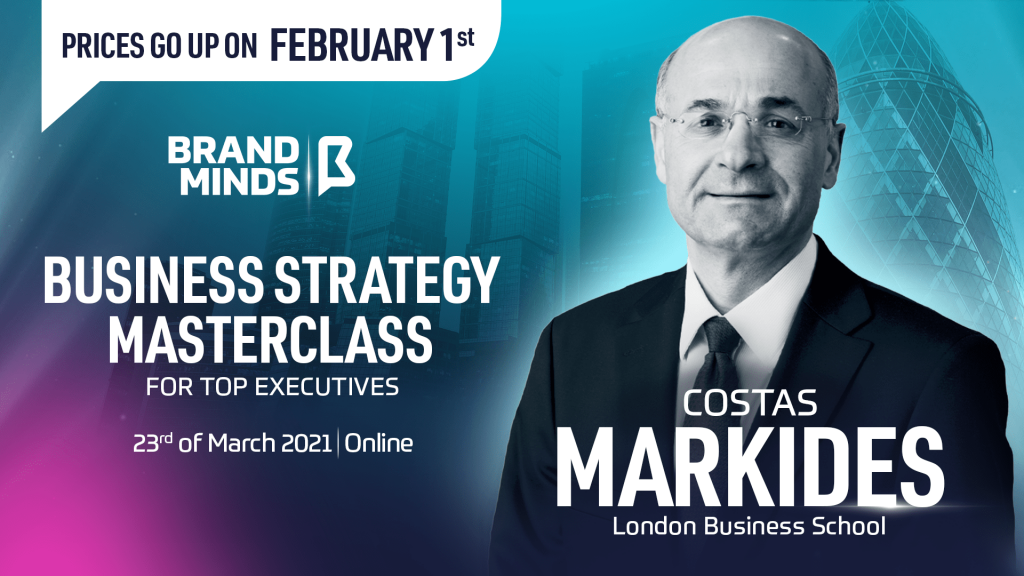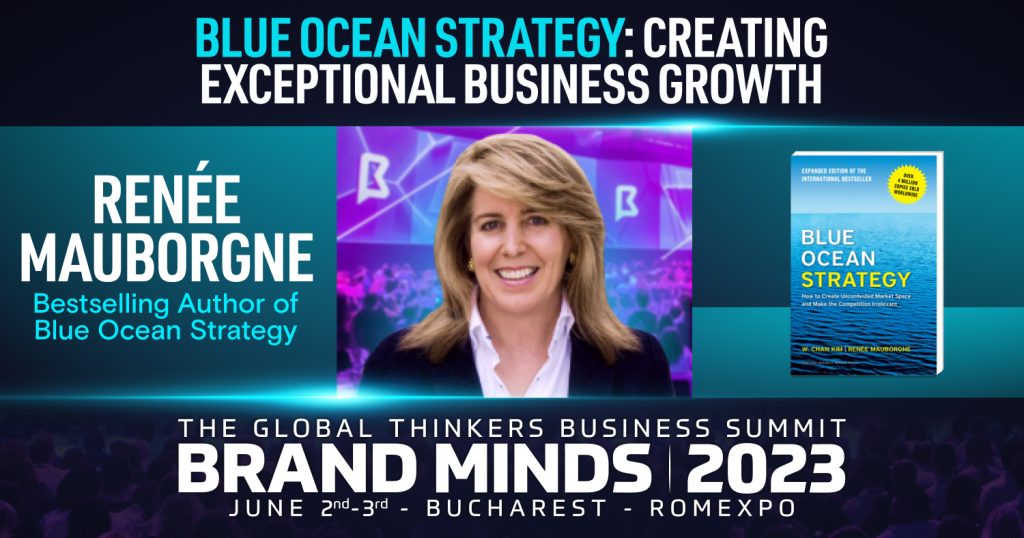13 business models to generate revenue
How businesses can generate revenue has changed a lot over the last decade. Choose the most appropriate business model for your company from these 13 business models updated for 2021.
1. Control and be rewarded from your own data business model
In exchange for convenience and a personalized experience, brands have been telling consumers to give away their personal data and relinquish any control over it.
We now know how brands used their consumers’ data and the damage they have caused.
Also, selling users’ personal data to third parties has been a huge source of revenue for these companies.
According to the latest PwC report, times are changing.
Consumers are demanding both a better, data-enabled experience and more flexibility and control over how their information is used.
In addition to this, consumers are starting to ask themselves: why should only companies profit from selling their data? They should take a piece of the pie as well.
Gener8 Ads is a web browser offering exactly that: it lets users control and earn from their data whilst browsing the web.
Gener8 Ads works with companies in the capacity of a media owner to do three things:
1. Provide premium media for them to reach a highly defined audience.
2. Use their proprietary first-party data to unveil actionable insights about their customers, eg. their purchase habits.
3. To promote their brands and drive action from their audience.
How does Gener8 Ads generate revenue?
Gener8 Ads gives 80% of the revenue back to the user and takes a 20% cut.
Users download the Gener8 Ads browser and choose to keep their data private or earn points any time their data is used. They can redeem these points for products, vouchers or donations to charity.
Watch Sam Jones, the company’s founder pitch Gener8 Ads on Dragon’s Den:
2. Empowering creators business model
What is the creator economy?
The creator economy has been growing exponentially in the past few years. It is estimated that more than 50 million people worldwide consider themselves to be creators.
Mighty Networks defines the creator economy as an economy built around highly motivated, creative, and skilled individuals that have started their own brand, business, or community utilizing a digital platform to share their work.
Not coincidentally, Mighty Networks is one of the platforms contributing to the creator economy. It is a community-focused platform that helps users build their businesses.
Mighty Networks offers users three plans they can choose from: the free plan, the business plan ($81/month) and the community plan ($23/month).
This is how users can drive business revenue depending on their chosen pricing plan:
- Charge for access to their membership site or group
- Charge for access to their online courses
- Becoming a Mighty Affiliate
3. Shopstreaming business model
Shopstreaming is the combination of live streaming, entertainment and shopping.
China is leading the shopstreaming market with 67 billion dollars in global sales for 2019 and an estimated 149 billion dollars for 2020.
If these stats show anything is that consumers want to buy from influencers during shopstreaming sessions.
It’s a business opportunity that saw various developers create digital platforms intended to transform the way to stream live events.
Livescale is one such developer. The company’s shopstreaming platform, LivescaleTV enables businesses to reach, engage, and monetize their audience, as well as understand the behaviours and interactions of their users.
L’Oréal Canada was the latest brand to use Livescale TV when they hosted a three-day shopping streaming festival.
Results:
- over 50% of product purchases from new customers,
- 300% higher conversion rate than the company’s website,
- 40% audience engagement.
4. Blockchain-as-a-service business model
According to recent reports, the global blockchain-as-a-service market size is expected to grow at an impressive compound annual growth rate of 62.73% to $52.5 billion by 2026.
Blockchain as a Service (BaaS) is a type of blockchain service offering that allows business customers to use cloud-based solutions to develop, host and adopt their own blockchain applications, smart contracts and other relevant functions on the blockchain.
The main drivers of the global Blockchain-as-a-Service market are:
- increasing awareness of the benefits provided by blockchain technology;
- need for security in transactions.
The top leaders operating in the Blockchain-as-a-Service (BaaS) market: Oracle, Microsoft, Accenture, Alibaba, IBM and Huawei.
5. Subscription business model
The subscription business model is a business model in which customers pay a recurring price at regular intervals for access to a product or a service.
The first companies to adopt the subscription business model were the news publishers whose readers paid a monthly fee to have newspapers and other magazines delivered to their door.
In more recent times, companies providing digital tools and platforms like Canva, Monday or Grammarly generate recurring revenue based on the subscription business model.
Other companies didn’t start as subscription-based businesses but recognized an unmet need for their products to be delivered on a monthly basis.
Customers opt for products to be delivered on a monthly basis because it’s convenient and saves them precious time.
Here are some examples of products delivered in subscription boxes; some also provide customization:
- Dog food subscription boxes (PetPlate, Jinx, Crafted Kibble)
- Beauty care and makeup subscription boxes (GlossyBox, BoxyCharm, Birchbox)
- Meal subscription boxes (Pasta Evangelists, Raw Generation, Hello Fresh)
6. Freemium business model
Freemium is a business model in which a company offers basic features to users at no cost and charges a premium for supplemental or advanced features.
It’s an appealing strategy for both companies and customers. Free is a powerful word in marketing because of its ability to instantly grab a customer’s attention. If basic free features are valuable to them, customers are more likely to pay for advanced or additional features.
When used correctly, the freemium business model can drive massive user adoption.
Dropbox, Zoom and Spotify are great examples of the freemium business model.
Dropbox has an annual revenue of $1.91 billion, Zoom – $2.6 billion and Spotify, $9.34 billion.
7. Dropshipping business model
The dropshipping business model is used in retail where the seller purchases the product from a third party (manufacturer or wholesaler) and has it shipped directly to the customer. The seller doesn’t hold the products in stock.
The main benefits of the dropshipping business model:
- Low investment
- Easy to start
- Perfect for beginner entrepreneurs
- Flexibility
- Remote work
- Easy to scale
- Wide selection of products
Among the top eCommerce platforms for dropshipping businesses are Amazon, Shopify, WooCommerce and Magento.
8. Drop-servicing business model
Drop servicing is a business model where your company sells other people’s services online.
Your company doesn’t perform the service, a third-party company performs the service.
9. Commission-based business model
The commission-based business model is a revenue model where a user is charged a fee for each transaction. The platform may charge either the seller or the buyer.
Examples of commission-based businesses: PayPal, Uber, Airbnb, Etsy, eBay.
10. Hidden revenue business model
If the service is free, you are the product, goes a very famous saying.
What it means is the service is not actually free. As the user, you pay for it, not with money, but with your personal data.
It’s the business model of digital giants like Google, Facebook, Instagram, Pinterest etc which collect users’ data and sell it to businesses for advertising purposes.
In 2020, Google generated almost $147 billion in revenue from the company’s ads business. Facebook generated close to $84.2 billion in ad revenues.
11. Razor and blade business model
The razor and blades business model is a business model in which one item is sold at a low price in order to increase sales of a complementary good, such as consumable supplies.
The best examples of companies generating revenues with this type of business model are suppliers of razors and blades (Gillette), printers and ink cartridges (Xerox), coffee makers and coffee pods/capsules (Nespresso), 3D printers and printing materials, game consoles and games.
12. Reverse razor and blade business model
The reverse razor and blade business model is a type of business model where the main product is sold at a premium price and the consumable, at a lower price.
Apple is the standard example of the reverse razor and blade business model. The main product, the iPhone, is sold at a premium price. Once the customer owns an iPhone, they have access to low-priced features like music on iTunes, movies or Mac OS and iWork free of charge.
13. Affiliate marketing business model
The affiliate marketing business model is a revenue model in which a company compensates third-party publishers to generate traffic or leads to the company’s products and services.
The publishers are paid in commission for every sale they make.
How does it work?
The affiliate shows a link for the product they are selling on their website or social media, customers click on the link which sends them to the store. If they purchase the product, the affiliate is paid a commission.
Two of the top-earning affiliate marketing platforms are Amazon Associates and Shopify Affiliate Program.
Join the Conversation
We’d love to hear what you have to say.
Get in touch with us on our LinkedIn Page, Facebook Page, Twitter or TikTok.
Get your company back in growth model with Business Strategy for Top Executives
Are you looking to get your company back in growth model?
Then BRAND MINDS’ Business Strategy for Top Executives Masterclass is for you.
Get access now, the price goes up on February 1st!
The BRAND MINDS Business Strategy for Top Executives is a full-day premium learning experience
The Business Strategy for Top Executives Masterclass is hosted online on March the 23rd and provides participants with the opportunity to learn the principles of innovative companies.
The masterclass is a full-day premium learning experience delivered by Costas Markides, one of the world’s most renowned experts on strategy & innovation.
As the Professor of Strategy & Entrepreneurship at London Business School for the past thirty years, his expertise is focused on strategic and business model innovation.

By attending this masterclass, participants will
- Explore NEW BUSINESS OPPORTUNITIES;
- NETWORK with top executives;
- Develop a CREATIVE BUSINESS STRATEGY;
- Learn to FORESEE BUSINESS TRENDS;
- Generate EFFICIENT BUSINESS MODELS;
- Explore how DISRUPTION CAN DEVELOP their industries;
- Learn to ADAPT in a volatile business ecosystem.
Business Strategy and Innovation are the answer for Successful Top Executives
The pandemic is the most disruptive event in modern history taking an unprecedented toll on the business environment.
It has presented top executives in every industry with new challenges ranging from team management to customer behavior changes, business operations to company culture.
When disruption occurs to such an extent, business executives need to take action.
How can businesses protect themselves against disruption?
By designing a new business strategy and a company culture that encourages innovation.
Why is business strategy important?
Because strategy drives decisions in business. The strategy provides the organization with the most effective path and direction to achieve its goals.
Why is innovation essential for business?
Because innovation helps businesses grow. Organizations that are continually innovating are more likely to achieve competitive advantage.
Set your business for success and attend BRAND MINDS’ Business Strategy for Top Executives Masterclass!
Join the Conversation
We’d love to hear what you have to say.
Get in touch with us on our LinkedIn Page, Facebook Page, Twitter or TikTok.

